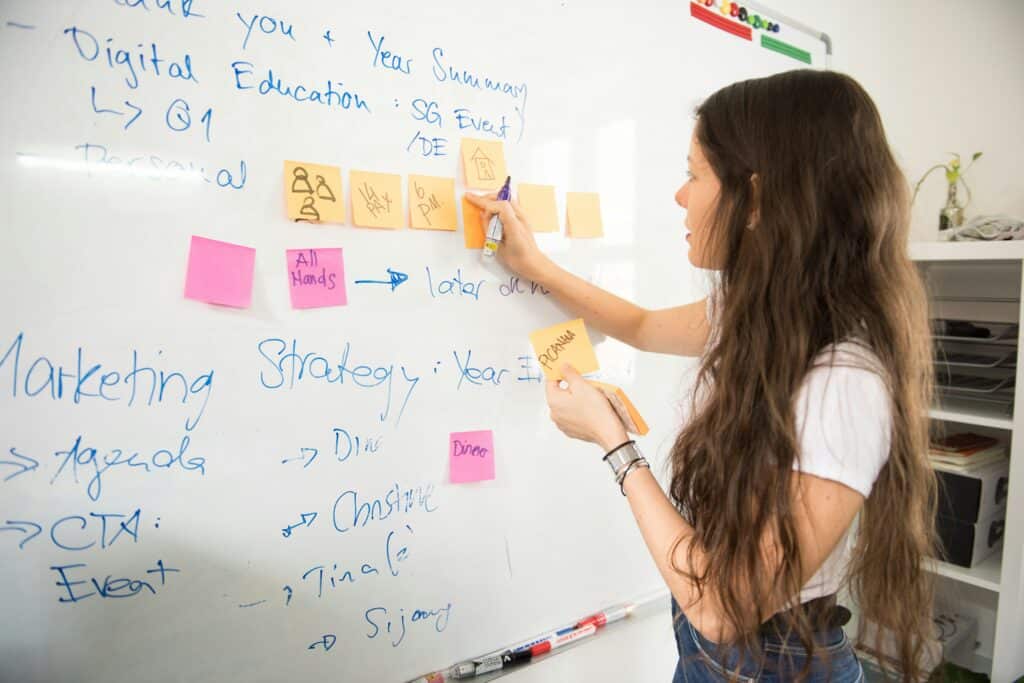What Are Student Loans?

When you hear the words student loans, it might sound like something far away, but for most college students, it’s a reality. Imagine starting college with big dreams but also big bills—tuition, books, dorm fees, and food. Not everyone has a scholarship or family money to pay for these things. That’s where student loans come in. They are a way to borrow money so students can go to school without paying everything upfront.
Student loans come in two main types: federal loans and private loans. Federal loans are backed by the U.S. Department of Education, which makes them safer for students because they usually have lower interest rates and flexible repayment plans. Private loans are given by banks, credit unions, or other lenders. These can sometimes charge higher interest, and they don’t always have forgiveness programs. According to the U.S. Department of Education, about 92% of all student loan debt in 2023 was federal debt (Federal Student Aid, 2023). That means most students depend on the government when they borrow.
One important thing to know is that student loans are different from other types of financial aid. Grants and scholarships are gifts—you don’t have to pay them back. Work-study lets you earn money while you’re in school. But loans always need to be repaid, with interest added. Interest is the extra money you pay on top of the amount you borrowed. For example, if you borrow $10,000 with a 5% interest rate, you’ll end up paying much more over time.
Here’s a table to make it easier to see the differences:
| Type of Aid | Do You Pay Back? | Who Provides It? | Extra Notes |
|---|---|---|---|
| Student Loans | Yes, with interest | Federal gov. or private banks | Most common way students pay for college |
| Grants | No | Federal gov., states, colleges | Based on financial need |
| Scholarships | No | Colleges, private groups, orgs | Based on merit, talent, or need |
| Work-Study | No (you earn wages) | College + federal program | Part-time jobs on or near campus |
The numbers around student loans show how big this issue is. The Federal Reserve reports that as of 2023, about 43.2 million Americans owe federal student loans, and together their debt adds up to over $1.6 trillion (Federal Reserve, 2023). To put that into perspective, that’s more than the total credit card debt of all Americans combined. Many borrowers take 10, 15, or even 20 years to finish paying off their loans.
Why do so many students turn to loans? The cost of college keeps going up. According to College Board, the average cost of tuition and fees for the 2023–2024 year was about $10,940 at public four-year colleges for in-state students, and about $39,400 at private nonprofit colleges (College Board, 2023). Without student loans, most families simply cannot afford these prices. Even if a student works part-time, the earnings usually don’t cover full tuition plus living expenses.
It’s also important to understand repayment. Federal student loans usually give you a six-month grace period after graduation before payments begin. Private loans might not have this option. Federal loans also let you choose repayment plans, like standard 10-year repayment, graduated repayment (payments start lower and increase over time), or income-driven repayment (payments are based on your income and family size). Private loans often do not offer these choices.
Here are some key facts about student loans that every student should know:
- Federal loans usually don’t require a credit check, but private loans do.
- Federal loans have fixed interest rates, while private loans may have variable rates that can rise.
- If you fall behind on federal loans, you may qualify for deferment or forbearance, which temporarily pause payments.
- Missing payments on private loans can damage your credit score quickly and may not offer the same protections.
- Federal loans may qualify for forgiveness programs, but private loans rarely do.
For many students, loans are both a lifeline and a challenge. They make higher education possible but create a debt that follows borrowers into adulthood. Graduates often face hard choices, such as whether to buy a house, start a family, or take certain jobs, all while carrying the weight of repayment. That is why understanding exactly what student loans are—and how they work—is the first step before even asking if they can be forgiven.
Can Student Loans Be Forgiven and What Programs Exist?

When students hear about student loan forgiveness, it often sounds too good to be true. The idea that you could erase thousands of dollars of debt by working in certain jobs or following specific rules gives many borrowers hope. Forgiveness means you no longer have to repay part or all of your loan. It’s not automatic—you have to qualify, apply, and sometimes wait years. Still, knowing about forgiveness programs can make a huge difference in how students plan their careers.
The most well-known program is Public Service Loan Forgiveness (PSLF). This program is for people who work in government or nonprofit jobs. To qualify, you must make 120 monthly payments, which equals about 10 years, under an income-driven repayment plan. Once you meet all the requirements, the rest of your loan is forgiven. According to the U.S. Department of Education, more than 615,000 borrowers have received PSLF forgiveness as of 2023 (Federal Student Aid, 2023).
Another important program is Teacher Loan Forgiveness. This program helps teachers who work full-time for five years in low-income schools. If you teach in certain subjects like math or science, you may qualify for up to $17,500 in forgiveness. If you teach other subjects, you can still get up to $5,000 forgiven. This program is designed to encourage new teachers to serve in communities that need them most.
Income-driven repayment plans, or IDR forgiveness, are another path. These plans adjust your monthly payments based on your income and family size. If you stay on the plan for 20 to 25 years, any remaining balance may be forgiven. StudentAid.gov explains that about 3.9 million borrowers are enrolled in IDR plans as of 2023. While this is a long wait, it gives people with lower incomes a chance to stay on top of their debt without being crushed by high payments.
Here’s a quick table comparing forgiveness programs:
| Forgiveness Program | Who Qualifies? | How Long Does It Take? | Amount Forgiven |
|---|---|---|---|
| Public Service Loan Forgiveness (PSLF) | Government & nonprofit workers | 10 years (120 payments) | Full remaining balance |
| Teacher Loan Forgiveness | Teachers in low-income schools | 5 years | $5,000–$17,500 |
| Income-Driven Repayment Forgiveness | Borrowers on IDR plans | 20–25 years | Remaining balance |
| Borrower Defense to Repayment | Students misled by their school | Varies | Full or partial cancellation |
Another lesser-known option is Borrower Defense to Repayment. This is for students whose schools misled them or broke the law. For example, if a college made false promises about jobs after graduation, you may not have to repay your loans. In recent years, thousands of borrowers from for-profit colleges have received loan cancellation under this program.
Applying for forgiveness can be complicated. Each program has its own forms, deadlines, and conditions. For PSLF, you have to submit a form every year to confirm that your employer qualifies. For Teacher Loan Forgiveness, your school must verify your service. For IDR forgiveness, you have to keep renewing your plan. Missing paperwork can delay or even block forgiveness. That’s why StudentAid.gov urges students to stay updated and carefully follow the instructions.
Some critics argue that forgiveness programs don’t reach enough people. Even though millions of borrowers could qualify, many don’t because they don’t know the rules. In fact, a Government Accountability Office report found that 99% of PSLF applications were denied in the program’s early years because borrowers did not meet all the requirements. Things have improved since then, but it shows how confusing the system can be.
Still, for students planning their futures, forgiveness is a real opportunity. Choosing a career in teaching, nonprofit work, or public service can come with long-term financial benefits. Others may find relief through income-driven plans. Forgiveness won’t solve the student debt crisis on its own, but it provides a path forward. For students already worried about debt, knowing that programs exist can bring hope.
In the end, student loan forgiveness is not a magic solution, but it is a lifeline. It requires patience, persistence, and knowledge of the rules. StudentAid.gov is the best place to start, but blogs and learning platforms can help break down the details into simpler terms. For any student, understanding forgiveness could mean the difference between a lifetime of debt and a brighter financial future.
How Students Can Get Support

Dealing with student loans can feel overwhelming, especially for young people balancing school, work, and family life. Many students are the first in their family to attend college, so they don’t always have someone to guide them through repayment choices. The stress of borrowing thousands of dollars while still studying can be very heavy. That’s why having the right support makes all the difference. Students who learn about their options early are better prepared to handle repayment later.
The best place to start is the official government website, StudentAid.gov. This site explains the different types of federal loans, repayment plans, and forgiveness programs. It also lets students log in to see their personal loan details, such as balances, interest rates, and servicer information. By keeping track of this information, students can avoid surprises when it’s time to repay. The site is updated regularly, which makes it the most reliable resource.
Still, websites alone can be confusing. That’s why schools often provide financial aid counselors who can help answer questions about student loans. Counselors can explain the differences between plans and give advice on budgeting. Nonprofit organizations also offer workshops for students and graduates who need help understanding repayment. These resources are free, and they can prevent students from making costly mistakes.
Here are a few steps every student can take to stay on top of their loans:
- Check your loan balance often. Know how much you owe and who your loan servicer is.
- Understand repayment options. Learn the difference between standard repayment, graduated repayment, and income-driven repayment.
- Apply for forgiveness if eligible. Don’t miss out on PSLF, Teacher Loan Forgiveness, or other programs.
- Keep documents organized. Save records of all payments and communications with loan servicers.
- Ask for help early. Contact your servicer or financial aid office before missing payments.
Support is not only about managing money—it’s also about managing stress. Many students feel ashamed of having debt, but it’s important to remember that millions of people borrow for school. In fact, student debt is so common that it shapes the economy in major ways. Talking openly about loans and forgiveness programs helps reduce stigma and makes it easier for students to seek help.
Another way students can get support is by turning to learning platforms like Scholarly Sphere. Blogs and articles that explain student loans in simple language give students tools to make informed choices. Instead of facing long government documents filled with legal terms, students can find guides written in everyday words. Understanding options clearly can reduce stress and encourage smarter financial planning.
Some students may also benefit from community support groups. Online forums, college clubs, and even social media communities often share tips about repayment and forgiveness. While it’s important to check information with official sources, these groups can provide encouragement and remind students that they are not alone. Hearing how others manage their student loans can inspire confidence and persistence.
At the end of the day, support comes from many places: official websites, school counselors, nonprofit organizations, blogs, and peer communities. What matters most is that students know they do not have to figure everything out on their own. With the right information and encouragement, repayment becomes less scary. Students can take control of their financial futures step by step.
Conclusion
Student loans may seem like a lifelong burden, but forgiveness programs and support systems show that relief is possible. From PSLF to income-driven repayment to school-based counseling, resources exist to help students succeed. StudentAid.gov provides the official information, while trusted platforms like Scholarly Sphere make it easier to understand. For students like Maya, who started this journey with hope and worry, the path forward is clearer. Could the right support and forgiveness program be the key that unlocks your future?
Works Cited
Trends in College Pricing and Student Aid 2023 – College Board
Student Loan Debt – Federal Reserve
Public Service Loan Forgiveness (PSLF) Data – U.S. Department of Education
Portfolio by Loan Type – U.S. Department of Education


